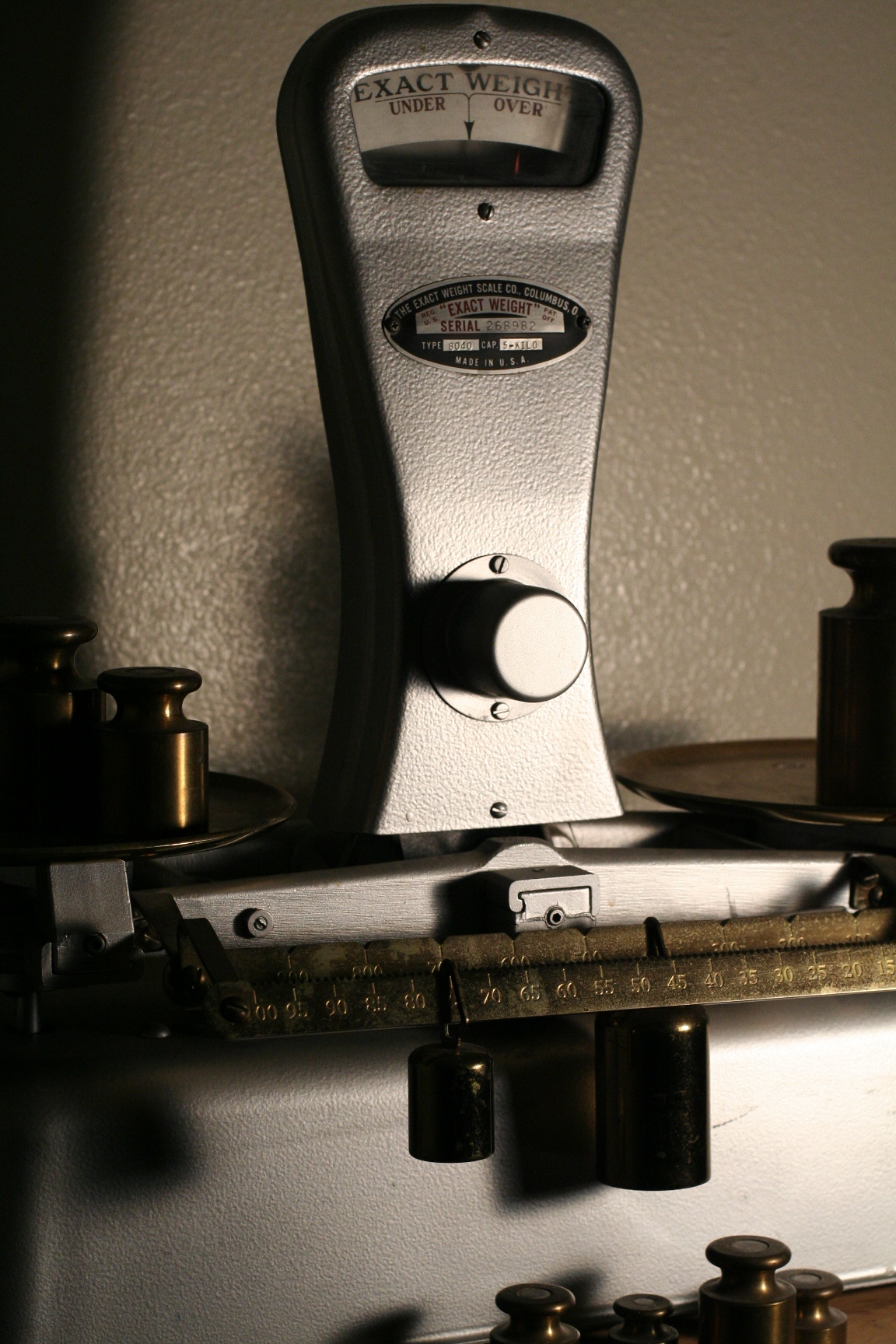In the days of my childhood, there was a bookshelf, long since replaced. On the bookshelf there was a set of encyclopedias from the 60’s or 70’s, the go-to information source for all school reports in the days before the Internet. On a shelf below the encyclopedias, or maybe above, was one of dad’s books, titled How Long, How Far, How Fast . . . or something like that. I never read it, but Dad said it was a book about measurements. It’s the kind of book a science teacher should have on his bookshelf.
Most measurements seemed simple enough. The yardstick had inches on one side, and centimeters on the other. Within the centimeters were millimeters, seemingly the smallest possible measurement. What could be so small it would require something less than a millimeter to measure it? Bigger distances were easy to understand too – the grocery store in town was close, Grandma and Grandpa’s was farther away, and shopping in Portland was a special trip because it was so far away. Speed is easy to measure because faster on the merry-go-round is much more fun than slow – it isn’t necessary to understand that velocity is made up of two things, distance and time. Even time is easy. It takes two Mister Rogers’ to equal a Sesame Street. And it is a very long amount of time when a dad tells his bored son, “It will only be 20 more minutes. Be patient . . . ”
But some measurements are more abstract, like density. Sure, metal is heavier than wood, but not if you have a whole lot of wood and not very much metal. The trick was understanding that comparing density is measuring the weight of different things as long as the different things have the same volume. Specific gravity is a handy concept I learned . . . sometime . . . that uses the density of water as a reference for the density of other liquids and solids, and it is a weight in grams for a volume of one cubic centimeter. So if the density of a cubic centimeter of water is 1.00, the same volume of something lighter, like grain alcohol, is roughly 0.78. And likewise, something heavier has a higher specific gravity, like aluminum which is 2.70. Something really dense is lead, and we know this because people whose feet are made of it drive faster, and bricks of such are said to be very heavy, and we use it for fishing weights because it is 11.35 times denser than water, and that carries the line below the surface of the water quickly with a minimal surface area to move through the water.
Other things have higher specific gravities, but they are less common, and so it is harder to understand just how dense they are in a tangible way. Gold is 19.32 times heavier than water, but it is hard to understand that by feel, simply because I have so little of it to hold in the palm of my hand. A small cross and it’s chain are not big enough to really feel the density. Platinum is a little denser still with a specific gravity of 21.45. I once had a ring made of that, but again, one ring is just not enough to understand density by holding it.
Several months ago, while assisting my brother in procuring an engagement ring, I had to wait for the jeweller to perform part of the transaction. I think they make you wait so you have plenty of time to look at all their other wares. Another jeweller wanted to show me a fine watch made by a company with Leonardo DiCaprio in its employ. The watch was significantly thicker than your ordinary Timex, and had a window in its back in order to show off the fine movement. Even though the watch was thick, it was also surprisingly heavy when he handed it to me – so heavy that I wondered why anyone would want to wear it. It might cause back pain from walking about in an unbalanced manner. Anyone considering such a watch should buy two of them so that the weight can be distributed to the left and right equally. I suspect that this watch had some very dense metal in it. The price was in the low five figures, and I advised the jeweller that, while it was a very nice watch, it was well beyond my means, besides which, its earthly value would deter me from disassembling it, and so it would not be of much use to me. He said “Well you never know when you might be able to afford it!”
Other than that watch, I can’t think of much else that I have held where a very high density was appreciable. So it is left to imagination or other tricks of the mind. Like when staring at the television in one position late in the tired night, and the screen seems to become very far away, and small. And still the television has the same mass which can now be held between fingertips. And before long, the whole room has become small and might be encompassed by one’s arms, yet still be very very heavy.
What about sin? Of course, sin isn’t a substance. If it was, it would mean God created sin, which he surely did not. But supposing sin could be quantified in such a way, how dense would it be? We like to count sins, as if we can actually number them all. Just taking my own sins, the ones I can think of . . .
. . . hang on . . .
. . . still counting . . .
. . . yeah. It’s been a busy day. There are others too, forgotten, lumped together, explained away, and ones I didn’t even notice. I seem to be a nice guy. The vast majority of people who know me would say so I think. But there are a few who think I’m horrible . . . and the truth is, they’re right. I’m so bad they say I must be sick . . .and really I am. It isn’t so much that I am a sinner because I sin, it’s that I sin because I’m a sinner.
If a nice guy is so riddled with sin, how much is in the whole world? All the billions of sinners who exist now? All the billions who have already died? All the babies not yet conceived and all of their sins not yet committed (or omitted)? All the corruption of God’s creation? So much sin that every living created thing is corrupted and dies? Every murder, every murder in men’s hearts, every broken marriage, every sideways glance at a short skirt, every covetous desire, every failure to love perfectly, every permutation of every sin from the Fall to the Last Day . . .
How dense would sin be? It would have to be so compact that one man could carry it. And it would have to be so heavy that it would kill God.
But while one man, Jesus Christ, carried every bit of all that sin and even became sin for us, and while that same Jesus Christ, 100% true God died for it though He was blameless, a single perfect sacrifice more than sufficient to cover all that sin, it didn’t take all the sin of the world to kill Him. He laid down His life willingly, and would have done it for just one. For just one sin if that was all there ever was. For just one person if only one might be saved. For me. For you.
He did it so that our death, the temporal consequence of sin, might not be permanent. He did it so that we are not separated from Him eternally. That He loved the world in this way is a gravity beyond measure.


